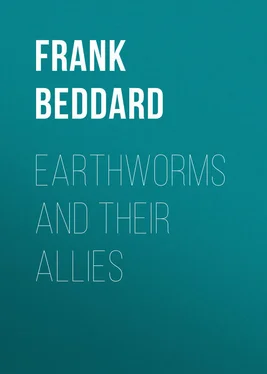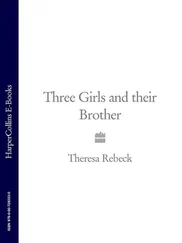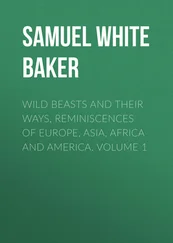Frank Beddard - Earthworms and Their Allies
Здесь есть возможность читать онлайн «Frank Beddard - Earthworms and Their Allies» — ознакомительный отрывок электронной книги совершенно бесплатно, а после прочтения отрывка купить полную версию. В некоторых случаях можно слушать аудио, скачать через торрент в формате fb2 и присутствует краткое содержание. Жанр: foreign_antique, foreign_prose, на английском языке. Описание произведения, (предисловие) а так же отзывы посетителей доступны на портале библиотеки ЛибКат.
- Название:Earthworms and Their Allies
- Автор:
- Жанр:
- Год:неизвестен
- ISBN:нет данных
- Рейтинг книги:3 / 5. Голосов: 1
-
Избранное:Добавить в избранное
- Отзывы:
-
Ваша оценка:
- 60
- 1
- 2
- 3
- 4
- 5
Earthworms and Their Allies: краткое содержание, описание и аннотация
Предлагаем к чтению аннотацию, описание, краткое содержание или предисловие (зависит от того, что написал сам автор книги «Earthworms and Their Allies»). Если вы не нашли необходимую информацию о книге — напишите в комментариях, мы постараемся отыскать её.
Earthworms and Their Allies — читать онлайн ознакомительный отрывок
Ниже представлен текст книги, разбитый по страницам. Система сохранения места последней прочитанной страницы, позволяет с удобством читать онлайн бесплатно книгу «Earthworms and Their Allies», без необходимости каждый раз заново искать на чём Вы остановились. Поставьте закладку, и сможете в любой момент перейти на страницу, на которой закончили чтение.
Интервал:
Закладка:
So too with the Trigastrinae where there are either two or three gizzards; but in this sub-family another modification has become apparent. The paired nephridia have disappeared and their place is taken by several, often quite numerous, pairs of much smaller nephridia called on that account 'micronephridia' instead of 'meganephridia.' To this sub-family belong the especially African but also American and Malayan Dichogaster , whose name is derived from the important fact that it possesses two gizzards.
Not far off is to be placed another sub-family, that of the Octochaetinae, which is New Zealand and Indian in range, the intermediate countries being, strange to say, not populated by this race of Oligochaeta. The group contains several genera of which Octochaetus , Eutyphoeus , and Dinodrilus are the best known. All these worms agree in the main features of their anatomy with Notiodrilus ; but they have diverged in different directions. Thus in Octochaetus the typical two pairs of gonads and glands belonging to the generative system have been retained, while the nephridial system consists of micronephridia; in Eutyphoeus , one pair of spermiducal glands has disappeared, and as a general rule the species of this genus have only one pair of spermaries and the corresponding pair of sperm ducts. They are close to Octochaetus . The third genus mentioned, Dinodrilus , is a New Zealand form specialised in possessing 12 setae in each segment. Otherwise it is not far removed from Octochaetus .
A fifth sub-family is also easily referable to the type whose structure has been dealt with as a preliminary to the present survey. That sub-family is the Ocnerodrilinae which is American and African in range. These worms are somewhat degenerate in comparison with their allies. Thus the calciferous glands are reduced to a single pair or to a single gland in the IXth segment, the nephridia though regular and paired have no covering plexus of blood vessels, and the worms themselves are slender and delicate, being indeed often aquatic in habit. The spermiducal glands, which are as in the former sub-families independent of the sperm ducts though sometimes opening in common with them into a short pocket-like ingrowth of the skin, are reduced in their minute structure and much simpler than in the other types.
The genus Kerria is the least reduced perhaps. It has the male pores on segment XVIII with a pair of spermiducal glands on the segments preceding and following this in the typical Acanthodriline fashion. There are two pairs of spermathecae in VIII and IX, but the spermaries are reduced to one pair in X. The gizzard is present. Ocnerodrilus is a little further reduced from this last. The gizzard has gone; there is but one pair of spermiducal glands (as a rule) opening in common with the extremity of the male duct on to segment XVII; the spermathecae also are reduced to one pair, but there are two pairs of spermaries. The African Nannodrilus is more robustly built. There are two gizzards, the male duct opens into a muscular pouch, into which also open one of the two or three pairs of spermiducal glands. There are two or three other genera and sub-genera not showing any great divergencies from the range of structure indicated in briefly defining those enumerated above.
Finally, we have the largest of all the sub-families of this family, viz. that of the Megascolecinae. These worms are mainly tropical in range and also mainly found in the Indo-Australian portion of the world. In them the sperm ducts open in common with the usually single pair of spermiducal glands and prevalently upon the XVIIIth segment. The glands moreover have not always, though they often have, the tubular form shown in all the sub-families hitherto considered. In many forms they are branched and lobate glands, and if there are two pairs one may be of one type and the other of the second and derived type, as for instance in Megascolex ceylonicus . Furthermore, it is much commoner among the genera of this sub-family for the setae to become numerous and to spread right round the segment; this condition is seen in the genera Pheretima , Megascolex , Diporochaeta , Perionyx , Plionogaster . The spermathecae also are commonly more than the typical two pairs of the forms already considered, and in certain species (for example Pheretima hexatheca ) there are as many as six pairs of those organs which are moreover – and in this they resemble the majority of species of the last sub-families – nearly always furnished with a diverticulum or diverticula. The nephridia are either paired or numerous and these various characters allow of the sub-family being split up into sixteen genera or thereabouts.
As an example of another type of organisation and as contrasting with Notiodrilus we may now briefly describe the structure of the genus Pontoscolex (better known as Urochaeta ), a member of the American and African family Geoscolecidae.
The worm is some four inches long and composed of as many as 212 segments. Each of these except the first has eight setae which for the first few segments of their occurrence are disposed in four pairs in the usual fashion. Behind this point however the setae cease to present this symmetrical arrangement and are irregularly disposed so that a given seta is not in the same line with the corresponding seta of the segments in front or behind. There is thus no region of the body which has not a seta implanted upon it; and the effect is therefore comparable to the condition obtaining in those worms, such as Pheretima , where circles of numerous setae are met with. There are however only eight in a given segment. The clitellum extends from segment XV to XXII or XXIII and is developed only dorsally and laterally. It has setae like the rest of the body; but those upon the clitellum are longer and more markedly ornamented than are those of the body generally. The latter are not only sculptured with fine ridges but are bifid at their free extremity. The prostomium is often apparently completely absent. It is however really present but is retractile. As to the pores which are visible externally the dorsal pores are completely absent. The pores of the nephridia lie in front of the dorsal pair of setae or in a line corresponding to the position of those setae where the arrangement has become irregular. The spermathecal pores are three pairs and are in the very front of segments VII, VIII, IX. The male pores, very inconspicuous, lie on the ventral side of segment XXI just within the clitellum. The oviducal pores are on segment XIV.
As to internal anatomy the general plan of the segmentation shows no great differences. Certain septa only show a difference, i. e. those separating segments VI-XI which are specially thickened. In the alimentary canal a gizzard in segment VI is to be noted and three pairs of calciferous glands in segments VII-IX. The nephridia are paired structures and commence early. The first two or three segments are occupied by a pair of large glands opening into the buccal cavity which are apparently a slightly modified pair of nephridia and are generally termed 'peptonephridia' since they are associated, as it would appear, with the function of alimentation and are not purely excretory organs. There is but a single pair of spermaries in segment XI, and of ovaries in segment XIII. The sperm ducts open on to the exterior in the position already mentioned and they are not associated at their pore with any glands comparable to spermiducal glands. A pair of sperm sacs depend from segment XI and traverse a considerable number of segments, being thus long and tongue-shaped instead of short and limited to one segment. The spermathecae are three pairs of elongated sacs in segments VII-IX, without any diverticula at all.
Читать дальшеИнтервал:
Закладка:
Похожие книги на «Earthworms and Their Allies»
Представляем Вашему вниманию похожие книги на «Earthworms and Their Allies» списком для выбора. Мы отобрали схожую по названию и смыслу литературу в надежде предоставить читателям больше вариантов отыскать новые, интересные, ещё непрочитанные произведения.
Обсуждение, отзывы о книге «Earthworms and Their Allies» и просто собственные мнения читателей. Оставьте ваши комментарии, напишите, что Вы думаете о произведении, его смысле или главных героях. Укажите что конкретно понравилось, а что нет, и почему Вы так считаете.












